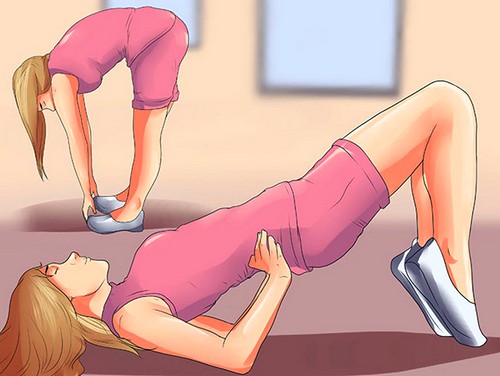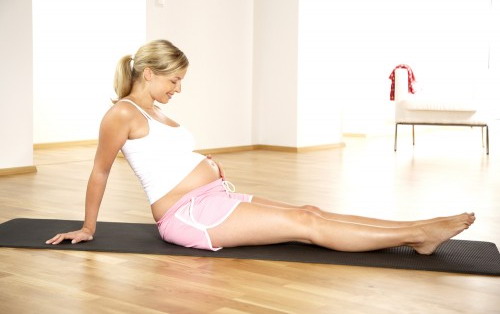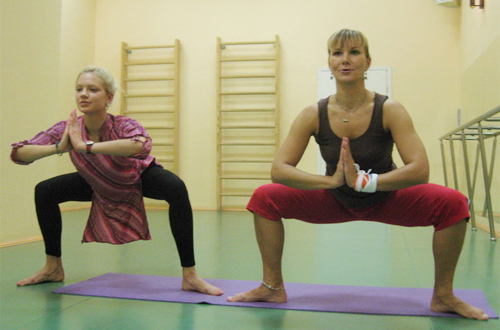Urination exercises
Regular exercise for the bladder helps to avoid a number of problems. The proper functioning of the organs located in the pelvic area depends on healthy and elastic muscles. People who have a strong bladder never suffer from urinary incontinence.
Exercise therapy and gymnastics
Weakening of the muscles of the bladder leads to urinary incontinence. The situation can worsen during pregnancy and after childbirth, with changes in the body that are associated with age or with a sharp increase in weight. For men, classes will help overcome premature ejaculation. To treat such a pathology, it is necessary to perform a therapeutic physical complex that strengthens the weakened muscles of the bladder. Examples of exercises to be performed to strengthen the bladder:
- Squeeze the ball with your knees, while at the same time contracting the muscle that is located in the perineum. The tension lasts from 3 to 10 seconds. Perform at a slow pace up to 10 times.
- Squat, while taking your hands as far back as possible. Tighten the muscle that is in the perineum and buttocks. Squatting is performed with springy movements, the speed of execution is medium. Repeat 10 times.
- The next exercise is performed when walking on toes: an inclination is made, in which the fingers try to reach the feet.
- An exercise consisting of squats, which are performed as follows: you need to hold on to a chair with your hands, legs wide apart. With the help of this exercise, the muscle tissues that are in the small pelvis are trained.
The main muscle that leads, when weakened, to urinary incontinence is that which closes and opens the sphincter of the bladder. It's easy to get it right. When urinating, it is necessary to arbitrarily interrupt this process, and then continue emptying. A good result will bring such an interrupt several times. Performing this exercise quickly returns muscle tone and incontinence disappears.
 Kegel exercises will be useful for any woman.
Kegel exercises will be useful for any woman.
The more often you do the exercises, the faster the problem will disappear. Use a special set of therapeutic physical exercises:
- Sit down, bend your legs, focus on straightened arms. Knees look to the sides, pull them harder, trying to reach the floor with your knees. Do up to 10 times.
- Sitting, bend your legs, roll onto your back, return to the position. Perform at a slow pace up to 7 times.
- Get on all fours. Rearranging the palms, move the body as much as possible to the right, then to the left. Execution speed - average. Repeat about 5 times.
- Get on your knees. Put your hands behind your head. Perform hip squats alternately in both directions. The speed of the exercise is average. Perform 7 repetitions.
- Lie on your side. As you exhale, pull your legs up, bending them at the knees, clasping your hands. Repeat the exercise on the other side, 3-4 times.
- Lie on your back. The legs are extended together, the arms are stretched along the body. Inhaling, lift the pelvic and lumbar parts of the body up, focusing on the heels and shoulders. Lock the position for 10 seconds. Repeat up to 10 times.
- Lie on your back. Raise your legs at an angle of 25 degrees, they should be bent at the knees. The arms are extended along the body. Raising your pelvis as high as possible, squeeze the muscles of the perineum and buttocks and fix the position for 10 seconds. Repeat the exercise up to 10 times.
With the regular implementation of such a complex, urinary incontinence will disappear in few weeks. With a positive result, do not stop exercising, as preventive measures will help to avoid the resumption of weakening of muscle tissue and, as a result, the bladder. Exercises carried out for prevention will help strengthen the general condition of the tissues and abdominal organs.
Kegel exercises to strengthen the bladder in women and men
 Daily performance of a complex of specialized exercises strengthens the abdominal muscles and solves the problem of a weak urea.
Daily performance of a complex of specialized exercises strengthens the abdominal muscles and solves the problem of a weak urea.
Kegel exercises are one of the simplest and most effective methods of strengthening the bladder. The set of exercises includes specially designed strengthening exercises that are performed to prevent drip and mild urinary incontinence, and also treat significant manifestations with their help. For pregnant women, a special complex has been developed that prevents the occurrence of urinary incontinence.
Indications
- Future pregnancy and childbirth - during childbirth, the muscles of the pelvis and perineum are fully used. If you learn to control them, it will be possible to speed up the process of childbirth and minimize pain.
- Recovery of the body after childbirth - during childbirth, stretching and weakening of the muscle tissue of the pelvis occurs. It is necessary to strengthen them to bring them into a healthy norm.
- Preventive measures for urinary and fecal incontinence are delicate pathologies that can occur at a later age and have a special development and factors that predispose to incontinence. Timely strengthening of weakened tissues will help to avoid such problems.
- Preventive and therapeutic measures for the prolapse of organs located in the small pelvis - for example, the kidneys.
- Preventive and therapeutic measures for hemorrhoids - in some cases, pathology can develop due to a sedentary lifestyle and low physical activity. However, training the tissues of the small pelvis reduces the risk of its occurrence.
- Maintaining the duration of sexual health.
- Prevention of inflammation of the genital organs.
- Prolongation of the youth of the body.
- Prevention of negative complications after surgical removal of the uterus.
- For the treatment of sexual dysfunction.
If the muscle tissues of the pelvic floor are unable to fully support the pelvic organs, this can lead to their prolapse, as well as other unpleasant pathologies. For example, involuntary urination with weakened muscles can even occur while laughing or coughing, so this is a rather delicate problem.
Contraindications
 Proper exercise technique is the key to good health.
Proper exercise technique is the key to good health. Completion of these classes implies rigorous compliance with technology. First of all, you should learn how to breathe correctly. This is necessary so that when concentrating during classes, you do not use other muscles. Otherwise, the effect may be opposite to the desired one, since there is a risk of an increase in intra-abdominal pressure due to improper exercise.
You need to breathe deeply and evenly. Breathing is performed only with the stomach, the chest should not move.
If you do strengthening exercises with a full bladder, there is a risk of infection of the urinary tract or inflammation of the genitourinary organs. Therefore, before classes, you need to empty yourself. It is forbidden to exercise while taking a hot bath. Expansion of blood vessels from hot water when performing techniques can lead to a strong jump in intra-abdominal pressure.
List of pathologies for which Kegel exercises should not be used:
- inflammation of the urinary organs;
- infectious diseases;
- acute cardiovascular diseases;
- pelvic organ prolapse;
- the presence of malignant and benign tumors.
Intimate muscle training is contraindicated if there has been a recent injury to the perineum or any surgical intervention. All physical activity in this case is carried out after the full recovery of the body. The length of the recovery period will depend on the severity of the injury.




